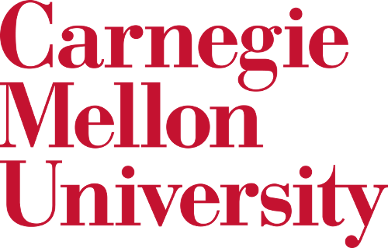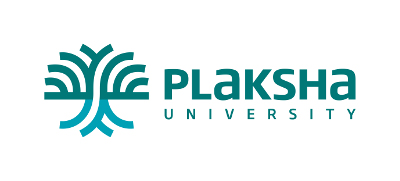Demos & Exhibits
Virtual Participation Schedule
| Paper Title | Authors | Time slot (IST) |
| ThousandEyes from a Network Engineer's Perspective | Uma Sankar Mohanty (Cisco Systems Ltd., India); Pulkit Bindlish (Cisco Systems Limited, India) | 3:30 to 3:45 PM |
| Protect Your Remote Worker - In Hybrid World | Senthil Kumar Chandramohan (Cisco Systems, India); Jay Tiwari ( & Cisco Systems, India) | 3:45 to 4:00 PM |
| Interact with Cisco SD-WAN via REST API's - A POSTMAN WAY!! | Uma Sankar Mohanty (Cisco Systems Ltd., India); Pulkit Bindlish (Cisco Systems Limited, India) | 4:00 to 4:15 PM |
| Radian: Paperless Academic Testimonials Enabled for Long-Term Validation | Souvik Pan (Indian Institute of Technology Bhilai, India); Dhiman Saha (IIT Bhilai, India); Rajat Moona (Indian Institute of Technology Bhilai, India) | 4:15 to 4:30 PM |
| Config Generator for Cisco Devices - Using Python, Jinja2 & CSV with Validation | Uma Sankar Mohanty (Cisco Systems Ltd., India); Pulkit Bindlish (Cisco Systems Limited, India) | 4:30 to 4:45 PM |
| Demonstration of a Testbed with State Estimation for Studying Security in Measurement and Control of Electric Power Transmission Grid | Yinghui Nie, Zhen Zhu and Boyang Zhou (Zhejiang Lab, China); Chenfan Huang and Longxiang Cheng (Zhejianglab, China) | 4:45 to 5:00 PM |
| Noise Recycling using GRAND for Improving the Decoding Performance | Arslan Riaz (Boston University, USA); Amit Solomon (Massachusetts Institute of Technology, USA); Furkan Ercan (Boston University, USA); Muriel Médard (MIT, USA); Rabia T Yazicigil (Boston University, USA); Ken R. Duffy (Hamilton Institute, Maynooth University, Ireland) | 5:00 to 5:15 PM |
| Use the Unused: ThousandEyes Hosted on Enterprise Portfolio | Uma Sankar Mohanty (Cisco Systems Ltd., India) | 5:15 to 5:30 PM |
Default Setup (In-person)
5 Jan 2023| Time slot: 11:30 AM to
4:00 PM IST |Venue: Indian Affairs
6 th Jan 2023, 11: 45 AM to 2:00 PM IST
|Venue: Indian Affairs)
The following default setup will be available for each demo (there might be minor
last minute changes):
- A single 6 x 2.5 ft. table.
- Extension power cable/multi-point (the organizers would highly appreciate if suitable power adapters are brought by the participants. India uses a 220V/5A power supply with Indian power sockets though in some cases the power sockets might allow for US style power plugs).
- A single easel for displaying any related poster that must be of size A0 4x3ft landscape mode.
All registered authors are suggested to join through virtual platform i.e. Airmeet. A detailed instruction on how to join the platform and navigate is available here along with some videos. https://www.comsnets.org/virtual_attendee_instructions.html
Accepted Demos
Research Demos
Although noise is often modeled as an independent Gaussian process in communication systems, a single communication channel is typically impacted by temporally correlated noise. While this correlation is usually broken up through interleaving and discarded, this demonstration shows that an accurate continuous noise estimate can be obtained in a purely hard-detection scenario by exploiting the temporal correlation that can be removed from the subsequent channels resulting in a significantly improved decoding performance and energy efficiency. This technique requires only simple receiver-side changes with no sender-side alterations and works for any codebook structure, decoder, and modulation scheme. We will use the hard-detection Guessing Random Additive Noise Decoding (GRAND) chip to demonstrate the decoding gains of greater than 2 dB obtained by employing noise recycling in hardware. We further show that significant energy savings of up to 36× and latency reduction of up to 12× can be obtained when GRAND is used for noise recycling.
Arslan Riaz (Boston University, USA); Amit Solomon (Massachusetts Institute of Technology, USA); Furkan Ercan (Boston University, USA); Muriel Médard (MIT, USA); Rabia T Yazicigil (Boston University, USA); Ken R. Duffy (Hamilton Institute, Maynooth University, Ireland)
In this demo, we present FENCE, a privacy-preserving, scalable solution for enterprise networks that continuously collects Internet access artifacts in real-time to help post-incident Internet forensics. We have built a data lakehouse to store these artifacts in a secure and compact query-friendly format. We implemented FENCE using open-source frameworks, deployed in a large enterprise with thousands of bring-your-own-devices (BYOD), and demonstrated that it works effectively in production environments.
Maruthi S. Inukonda (IIT Hyderabad, India & Freelancing Opensource Solutions Architect, India); Sai Harsha Kottapalli (Microsoft, India & IIT Hyderabad, India); Bheemarjuna Reddy Tamma (IIT Hyderabad, India); Sparsh Mittal (IIT Roorkee, India)
Parkinson's disease (PD), a commonly occurring neurodegenerative disease, affects millions worldwide. One approach to detecting PD is observing variations in an individual's speech patterns, such as tone, jitter, shimmer, and pitch. In this demo, we present PidiBuddy, a smartphone-based system that detects PD based on the user's voice data. To reduce privacy concerns and dependency on background infrastructure and facilitate usage by naive users, PidiBuddy runs end-to-end on the smartphone. It collects short speech segments, extracts features, and infers PD (each step happens in situ) using a Random Forest-based machine learning model. Before deploying the model on the device, we trained the model offline using a publicly available speech dataset comprising a set of MFCC (Mel-frequency cepstral coefficients) related speech features. The initial findings from the system are promising in terms of PD detection performance, system parameters, and system usability, all of which we aim to improve further in our ongoing work.
Saumya Mathkar (Bits Pilani, Goa, India); Prakhar Karsh and Udit Baluja (Bits Pilani Goa, India); Surjya Ghosh (BITS Pilani Goa Campus, India); Sougata Sen (Birla Institute of Technology and Science, Pilani, Goa, India); Vinayak Naik (BITS Pilani, Goa, India)
Our objective in this demonstration is to demodulate the received BPSK signal using a deep neural network. In conventional demodulation, the performance is limited by the carrier frequency/phase offsets, hardware imperfections and use of multiple levels of nonlinear devices such as synchronizer, offset detector, etc. To improve the detection performance under high noise (i.e., low SNR), varying channel conditions and hardware impairments, we propose and demonstrate a deep neural network based demodulator which is able to detect bits even at lower SNRs. Results show that we can detect the received signal under synchronization offsets, varying channel parameters and hardware imperfections due to its high proficiency in learning signal patterns and detecting the pattern embedded in noise. The demonstration will be carried out on USRP coupled with Matlab.
Arhum Ahmad (INDIA & IIT ROPAR, India); Satyam Agarwal (Indian Institute of Technology Ropar, India)
This demonstration presents the working principles and key features of a unique mobile application named LegalHelper. The application is developed to address the existing challenges in terms of reduced interpretability and low perception of the legal documents as commonly faced by the general public. The core software is built up by leveraging the power of cutting-edge technologies such as Blockchain, Computer Vision, and Natural Language Processing. The main components to be demonstrated include (a) Smart Translation, and (b) Smart Contract.
Garvit Chugh and Suchetana Chakraborty (Indian Institute of Technology Jodhpur, India)
The rising popularity of 5G is expected to drive transformation in a large number of industries, thereby generating a diverse set of use cases with distinct and specific requirements on throughput, latency, availability etc. 5G Slicing, one of the key enablers of 5G, will allow different applications with custom QoS requirements to be supported on the same physical infrastructure. A slice, during its lifecycle from planning to decommissioning, requires a scalable Management and Orchestration (MANO) framework that automates the slice deployment and its management. The dynamic nature of slices and the strict QoS requirements of 5G applications, requires a more intelligent MANO framework with analytics capabilities for slice SLO assurance and optimization capabilities for resource efficiency. In this demo, we present an end-to-end 5G slicing lifecycle framework with additional capabilities of optimal cost-efficient placement of slices and 3GPP compliant Data and Analytics Function (DAF) module for intelligent monitoring for assurance.
Kavya Govindarajan (IBM Research, India); Seep Goel (IBM Research - India, India); Praveen Jayachandran (IBM India, India); Steve Glover (IBM Software, UK); JM Pulido Villaverde (IBM Software, Spain); Jacques Cresp (IBM, France); Joel Viale, Sophie Martin and Fabrice Livigni (IBM Global Sales, France)
Portable Document Format (PDF) are widely used throughout the world for exchanging documents. The main reason of their popularity is that this format maintains the structure of the original document without taking into consideration the software that was used to draft the document. PDFs also provide authenticity and integrity of documents by using and verifying digital signatures. Since this all happens digitally the security notion of the verification has to be stronger than in analog world. Nowadays digital certificates and digital contracts have equivalent importance as that of physical certificates and contracts. Digital signatures using cryptographic algorithms provide a way to verify a PDF's authenticity and integrity.
Souvik Pan (Indian Institute of Technology Bhilai, India); Dhiman Saha (IIT Bhilai, India); Rajat Moona (Indian Institute of Technology Bhilai, India)
In recent times, Internet of Things (IoT) devices is gaining popularity in advanced wireless technology (i.e., 5G). However, in 5G applications (say in edge platform), the IoT devices have limited computation & processing capabilities which makes it challenging to execute Deep Neural Network (DNN) models on them. To address this, we introduce Split Computing technology, to partition DNN inference layers based on the computational capabilities (such as bandwidth, battery level and processing power, etc.) of IoT and edge (computationally powerful) devices, respectively. To validate split computing, we propose a framework called Distributed Artificial Intelligence (DAI) architecture. We use the architecture for a fitness application (use-case) where we estimate the pose of a person using our proposed Quantized Split PoseNet DNN (QSP-DNN) algorithm which partitions the DNN layers among IoT device and edge based on Wi-Fi bandwidth. We conduct extensive experiments to validate the QSP-DNN algorithm using DAI architecture. The QSP-DNN with DAI compares split execution (computed among IoT device & edge) for partial offload and full-offload executed on edge device. The result shows that using QSP-DNN in DAI architecture provides split execution performing 20.76 % improvement compared to the full offload case.
Jyotirmoy Karjee (Samsung, Bangalore, India); Praveen Naik S, Kartik Anand and Chandrashekhar S Byadgi (Samsung R&D Institute, Bangalore, India); Ramesh Babu Venkat Dabbiru (Samsung India Software Operations, India); Srinidhi N (Samsung R&D Institute, Bangalore, India)
In this paper, the design and implementation of robust and precise localization and navigation scheme are proposed for an autonomous mobile robot. The proposed scheme utilizes the features of Light Detection and Ranging (LiDAR), Hector Simultaneous Mapping and Localization (SLAM), and Adaptive Monte Carlo Localization (AMCL) which is intuitively integrated with Range Flow 2D Laser Odometry (RF2O) to achieve the accuracy in the pose identification of the mobile robot. Here, the use of Hector SLAM provides aids in avoiding obstacles and the use of RF2O Laser Odometry eliminates the need for additional hardware sensors for the odometry data. And thus the proposed technique is precise and efficient in terms of power and computational complexity in a reduced form factor. The working of the developed robot is also demonstrated through the mapping and localization in a physical lab space which follows a complete close loop that ensures the accuracy and efficacy of the implemented algorithm.
Akshat Vikram Singh and Yash Agrawal (Indraprastha Institute of Information Technology Delhi, India); Rahul Gupta (IIIT Delhi, India); Abhishek Kumar (Indraprastha Institute of Information Technology Delhi, India); Vivek A Bohara (Indraprastha Institute of Information Technology, Delhi (IIIT-Delhi), India)
In modern power transmission grids, the vulnerability of measurement and control (MC) process can be exploited to cause serious deviations in the state estimation (SE), which can disrupt the grid operation stability. The security validation of these systems requires a testbed to reproduce the MC process. In this demo, we present a novel electric power transmission testbed with SE for studying the security in MC of the grid. The testbed aims to validate how cyber attacks can affect the operation of the grid by simulating the MC process. The simulation involves the electric dynamics and process control of the grid, as well as the MC process in a single substation and multiple substations. We demonstrate how the testbed works through carrying out the false measurement data injection attack experiments based on the IEEE 14-bus power system. The SE results of the grid under the attacks deviate a lot in the voltage and power of physical nodes in the grid, from the normal condition without the false data. The deviation further causes unstable grid operations.
Yinghui Nie, Zhen Zhu and Boyang Zhou (Zhejiang Lab, China); Chenfan Huang and Longxiang Cheng (Zhejianglab, China)
With the onset of 5G, Telecom service providers around the world are in the midst of a radical transformation of their networking infrastructure, moving away from vertically optimized proprietary hardware and software boxes, to Cloud Native (containerized) network functions (CNFs), communicating over standardized interfaces and running on Kubernetes clusters that operated on commodity off-the-shelf hardware. While CNFs, managed by container orchestrators provide greater agility, manageability, and significantly lower operational costs, the reliability and performance assurance have become much more complex with thousands of virtualized moving parts. Given the criticality of the workload, these large-scale containerized Telco systems require fast and completely automated reliability assurance pipelines where complex issues are detected, isolated, and remediated automatically. In this demo, we present a framework for a closed-loop assurance pipeline with CNF-level autoscaling as a use-case implemented on a real 5G workload.
Mudit Verma and Dushyant Behl (IBM Research, India); Praveen Jayachandran (IBM India, India); Amandeep Singh (IBM Texas United States, USA); Matthew Thomas (USA)
Blockchain Technology is preferred in various applications for its decentralization, integrity and availability features. Much research is going on for blockchain technology's efficient design and utilization. Also, the application of blockchain in the IoT environment is a new area of focus. However, researchers have problems testing various blockchain features on IoT devices. Hence, we developed the Blockchain Platform as a Service (BlockPaaS), which allows users to run various blockchain protocols on the IoT hardware instantly.
Yuvaraj Rajendra and Venkatesan Subramanian (Indian Institute of Information Technology, Allahabad, India); Sandeep K Shukla (Indian Institute of Technology Kanpur, India)
The combination of expressiveness and access to native Linux kernel capabilities explains the wide adoption of extended Berkeley Packet Filter(eBPF) as de-facto choice for implementing software based in-kernel network functions. While full of potential, it is infeasible to abandon existing (in-kernel) networking infrastructure and switch to eBPF based solutions overnight. To this end, we present an evolutionary approach for extending existing in-kernel networking infrastructure with eBPF modules such that new enhancements and feature replacements can be done to extend the present networking infrastructure. We demonstrate feasibility of eBPF based feature evolution of in-kernel networking by using Kubernetes CNI as an example.
Palani Kodeswaran (IBM Research India, India); Dushyant Behl and Sayandeep Sen (IBM Research, India); Hai Huang (IBM T. J. Watson Research Center, USA)
With the advancements in 5G technology, Multi-access Edge Computing (MEC) has always been at the forefront due to its ability to provide additional computational power with reduced network latency compared to cloud computing. Most applications from the Vehicle to Everything (V2X) and Intelligent Transport Systems (ITS) domains are stringent in latency requirements, for which MEC is an excellent enabler. As per MEC architecture, MEC applications can leverage the benefits of storing essential information as a part of MEC services to further reduce the latency. In this work, we enhance an in-house 5G emulation framework by integrating it with ETSI MEC Location Service API for supporting various ITS use cases. We demonstrate the use case of providing proximity alerts to the drivers using SUMO platform and a mobile application.
Madhuri Annavazzala (IIT Hyderabad, India); Arun Kant Dubey (IIT Hyderabad & Indian Institute of Technology Hyderabad, India); Supriya Dilip Tambe (Indian Institute of Technology Hyderabad, India); Bheemarjuna Reddy Tamma (Indian Institute of Technology, Hyderbad, India); Antony Franklin A (Indian Institute of Technology Hyderabad, India)
Light Fidelity (LiFi) is complementary to Wireless Fidelity (WiFi) that uses light as the communication medium with leveraging the indoor lighting infrastructure. LiFi has limited coverage but provides a higher data rate, in contrast WiFi has broader coverage with a comparatively lower data rate. The hybrid LiFi/WiFi network (HLWN) takes advantage of both LiFi and WiFi to provide higher average data rate with over a larger coverage area. In HLWN, LiFi and WiFi can coexist and complement each other, as the spectrum of LiFi and WiFi are non-overlapping and non-interfering. In this work, we demonstrate the realistic performance of a hybrid LiFi/WiFi network in a physical testbed environment for different indoor scenarios and evaluate its data rate and handover latency performance.
Saswati Paramita (IIIT-Delhi, India); Anand Srivastava (Indraprastha Institute of Information Technology Delhi, India); Vivek A Bohara (Indraprastha Institute of Information Technology, Delhi (IIIT-Delhi), India); Abhijit Mitra (IIIT-Delhi, India); M Hari Ramamoorthy, Hai Krishna Atluri and Paventhan Arumugam (ERNET India, India)
Robot Operating System (ROS) has played a pivotal role as a communication middleware among different peripherals, including sensors and actuators of robotics and other systems, with the advancement of connected systems around the globe. The development of DDS based ros2 has increased its popularity to be used for multi-bot communication over the network as well. However, latency and throughput become a bottleneck for latency critical applications such as remote surgery, remote driving in dense data traffic. ROS2 publishes its sensors & actuators messages in the form of topics. A middleware solution can be designed considering the target critical topic's traffic flows and the required QoS for such applications. We perform a comparative study of the target application affected because of other ongoing traffics in the network. A software solution to get desired QoS for the applications in a static traffic scenario has been developed based on prioritization of the message data flow and WiFi's EDCA parameter configuration.
Bishal Jaiswal, Himanshu Tyagi, Aditya Gopalan and Vishal Sevani (Indian Institute of Science, India)
The COVID-19 pandemic has forced most interactions to move to online space, starting from online lectures, conferences in hybrid mode, and work-from-home office works. Hence, it is essential for live video streaming to be reliable and provide a good quality of experience (QoE) to users. However, in large sections of the world, the cellular network is not reliable enough to be used for online participation in such events. To quantify this problem, we first measure the QoE in terms of lag, video resolution, and dropped calls on a popular video conferencing platform Google Meet over three different cellular ISPs in New Delhi, India. We observe significantly worse quality of experience metrics compared to a study recently performed in the US. To mitigate this problem, we propose NATIVE (Network Aggregation-based Tiled lIve Video strEaming), a system of aggregating the cellular network connectivity using a secondary or helper device in the vicinity trusted by the user. The implementation of NATIVE uses tiled encoding of video, where the video frames are divided into rectangular units known as tiles. All the tiles are divided into two subsets which are scheduled independently via the available network interfaces depending on its importance. The receiver device receives video segments from the two network paths and stitches back the tiles in them to play. We show the demo of NATIVE using two laptops and a cloud server where the server acts as a streamer.
Keshav Gambhir and Tanmay Rajore (IIIT Delhi, India); Shubham Chaudhary (IIIT-Delhi, India); Taral Jain, Avishi Gupta and Mukulika Maity (IIIT Delhi, India); Arani Bhattacharya (IIIT-Delhi, India)
Our goal in this work is to achieve reliable communication between nodes across a water surface. To this extent, we conduct an extensive measurement campaign covering a few scenarios that place the transmitters and receivers at different depths underwater. Our experimental results indicate that the path loss exponent is significantly higher for underwater communication. The links between Tx and Rx crossing a water surface has an asymmetric nature. Furthermore, Tx-Rx nodes have to be aligned inline or at 270 to support a higher PDR.
Shrutkirthi S. Godkhindi, Prabhakar Venkata T. and Preetham Reddy (Indian Institute of Science, India)
Docker Containers are increasingly being used to develop, deploy and distribute software. However, they are also vulnerable to various attacks resulting in breaches and access to the host machines. To understand the various attacks on the containers and study them in a sandbox environment, we develop a honeypot. The honeypot systematically collects data logs of all the activities both inside and outside the container. We build on open source log gathering tool Osquery and Docker APIs to obtain `evented' activity logs. Our honeypot provides granular information about the container activities which can be analyzed to build detection rules and secure the containers.
Arjun Sable (Indian Institute of Technology Bombay, India); Yogesh C Jadhav and Maithri Suresh (IIT Bombay, India); Manjesh K Hanawal (Indian Institute of Technology Bombay, India)
In this paper, we propose a WebRTC-based protocol for a Telerobotic session that enables forking of the Telerobot's live visual feed to the MEC (while the robot is parallelly engaged in live multimedia session) for running real-time analytics and feed the inferences back to the remote operators and observers via the Robot.
Abhijan Bhattacharyya (Tata Consultancy Services Ltd., India); Ashis Sau, Madhurima Ganguly and Suraj Kumar Mahato (Tata Consultancy Services, India)
We present a multi-modal human instruction comprehension prototype for object acquisition tasks that involve verbal, visual and pointing gesture cues. Our prototype includes an AR smart-glass for issuing the instructions and a Jetson TX2 pervasive device for executing comprehension algorithms. With this setup, we enable on-device, computationally efficient object acquisition task comprehension with an average latency in the range of 150-330msec.
Dulanga Kaveesha Weerakoon Weerakoon Mudiyanselage (Singapore Management University, Singapore); Vigneshwaran Subbaraju (Institute of High Performance Computing, Singapore); Minh Anh Tuan Tran (University of Colorado Boulder, USA); Archan Misra (Singapore Management University, Singapore)
Product Demos
- Monitoring device status
- Configuring a device, such as attaching a template to device
- Querying and aggregating device statistics
- Infrastructure assisted-non ego intelligence for proactive collision avoidance,
- Digital twin-based network planning optimization for warehouse operational areas.
-
A QoE-centric robust live video-streaming mechanism for latency-critical interactive applications [
]
Cisco SD-WAN vManage API is a REST API interface for controlling, configuring, and monitoring the Cisco devices in an overlay network. The API plays a pivotal role for clients to consume the features provided by vManage. Some of the use cases for vManage API are:
Uma Sankar Mohanty (Cisco Systems Ltd., India); Pulkit Bindlish (Cisco Systems Limited, India)
Configuring devices from the scratch has always been prone to Human errors. Once we increase the scale or number of devices the chances of such errors are extrapolated & we will never be able to validate it until they are in production and things do not work as they should. This is where we pour in more time and efforts in fixing things, getting on end-less escalation calls. This Demo will be a fun session where we showcase how to generate configs for Cisco Devices by using Python, Jinja2 Templating & CSV. Not only we generate them but also validate them before pushing them on to the devices.
Uma Sankar Mohanty (Cisco Systems Ltd., India); Pulkit Bindlish (Cisco Systems Limited, India)
ThousandEyes is now a part of Cisco. Yayyyy!!! ThousandEyes enables organizations to visualize any network as if it was their own, quickly surface actionable insights, and collaborate and solve problems with service providers. This Session will focus mostly on the ThousandEyes Enterprise Agent. This will be a fun session with ThousandEyes getting hosted on the whole Enterprise Portfolio. We will go through each of those Enterprise platform's which is capable of hosting applications and run through all the prerequisites and be able to host ThousandEyes on them. This session will be a one stop shop for customer looking towards utilizing their edge devices for hosting ThousandEyes be it ASR1K, ISR4K, CAT8K or a CAT9K device.
Uma Sankar Mohanty (Cisco Systems Ltd., India)
Cisco DNA Center is a powerful network controller and management dashboard that lets you take charge of your network, not only this; DNAC as a platform enables IT organizations to integrate it within their daily operation process flows. This demo session covers the applications of DNAC APIs for implementing Automation workflows and Assurance capabilities on network devices using zero touch. The presented workflow will cover a holistic view of real-life deployment of all available DNAC features related to network operations using APIs.
Sunil Pareek, Ambarish Kumar and Senthil Kumar Chandramohan (Cisco Systems, India)
Working from Anywhere and Anytime is the new normal, bringing new security challenges for the business. The session aims to approach the subject of hybrid work from the end-user perspective. The session will have an introduction to the integrated security framework for hybrid work and hands-on experience to showcase the simplicity of Cisco's secure solution for enabling hybrid work. It follows Cisco's SASE model to secure all untrusted, unmanaged, remote devices/users.
Senthil Kumar Chandramohan (Cisco Systems, India); Jay Tiwari ( & Cisco Systems, India)
ThousandEyes Internet and Cloud Intelligence platform expands visibility, insights, and action into digital delivery of applications and services over the internet and cloud. ThousandEyes enables organizations to visualize any network as if it was their own, quickly surface actionable insights, and collaborate and solve problems with service providers. This will be a fun session on looking at the issues that a Network Engineer faces in his day to day work. Be rest assured of this joy ride session with a couple of scenarios which all of us as Network Engineers can relate to as we all would have faced such scenario's in the past. Let's see how we can utilize Thousand eyes to it's fullest and overcome some of these daily challenges that we face.
Uma Sankar Mohanty (Cisco Systems Ltd., India); Pulkit Bindlish (Cisco Systems Limited, India)
Researchers lack the requisite tools for simulating end-to-end 5G networks. There are a few ‘Link-level' simulators that enable users to model a single link between the UE and the gNB. However, these cannot: (i) simulate the network end to end i.e., from the UE to the host-server, and (ii) model the interaction between protocols operating in different layers of the TCP/IP protocol stack. NetSim, addresses these problems. It is an end-to-end, full stack, code block level simulator featuring (i) an easy-to-use GUI with simple drag and drop functionality (ii) a results dashboard and output files for metrics such as throughput, latency, error etc., and (iii) the 5G Protocol source C code that is provided along with, which can be modified by researchers to write their own algorithms/protocols
Pranav Viswanathan (TETCOS, India)
We present our ongoing work, Industry 5.0 prototyping framework for 5G-Networks to support autonomous intelligent operations. The automation of well-structured and semi-structured domains such as logistics and cargo management are essential to improve the efficiency and reduce costs. To this end, leveraging a low latency, high performance 5G-network infrastructure to create a network-aware autonomy for warehouse operations results in new use-cases in warehouse operation domains like predictive maintenance, Tele-operation/guidance at user sites and infrastructure assisted robot operations, etc. We propose to use digital twin-based co-simulation framework for realizing 5G network for warehouse operations. We extended the CORNET2.0[1] framework to support 5G-NR and demonstrate following use cases:
Srikrishna Acharya and Kaustuv Saha (Nokia, India)
The demo showcases research projects undertaken as part of Nokia Center of Excellence for Networked Robotics (CNR) at IISc. The Nokia CNR is an interdisciplinary research center focussing on Research projects involving co-design of next-generation networks and application of AI in robotics domain for solving societally relevant problems. The research domains that would be demonstrated are reinforcement Learning based Sequential Optimization for Multi-robot Intersection Management, Applications of Networked UAVs: Payload Transport, Autonomous Exploration using Ground Robots with Safety Guarantees, Low complexity approximation free control for an unknown nonlinear multiagent system with state and input constraint, Network Enabled Navigation and Multi-Agent Collaborative Framework for Automated Agriculture.
Ayush Das, Bhagiya Jaykumar Amarhibhai, Eeshan Kulkarni Prashant, Hari Haran R, Jayant Teotia, Jeel Himmatbhai Chatrola, Nishanth A Rao, Nishchal Hoysal G, Pankaj Kumar Mishra, Srijan, Varan C R, Amrutur Bharadwaj, Pavan Tallapragada, Pushpak Jagtap, Shishir NY, Suresh Sundaram (Indian Institute of Science (IISc), Bangalore, India
We consider two aspects of private AI/ML. Firstly, we discuss private training/learning - the technique to train models without compromising privacy of the data holders. We present Federated Learning in action using a specific use-case of Fraudulent Transaction Detection among Banks in an adversarial setting where some banks may want to peek into the data belonging to other banks. Moreover, some banks - a minority, will try to actively disrupt the training process. We also present our patented Epsilon Cluster Selection algorithm which works in the setting mentioned above despite the adversity. Secondly, we discuss private inferencing - the technique that allows outsourcing of inference queries to a server, which owns a pre-trained AI/ML model. The input query privacy of the user is preserved using Fully Homomorphic Encryption, which allows computing on encrypted data without revealing any information about the data. Despite the privacy advantage, Private Inference using FHE comes with compromises in terms of computational time, accuracy and memory. In this work, we present ways to optimize private inference using FHE, both from ML side and FHE side. The algorithm/system we designed is able to take input as the user computation requirement and give optimal configuration of FHE library and ML model based on Quality of Service parameters given by user.
Delton Antony, Imtiyazuddin (Cybersecurity and Privacy research, TCS)
Conventional real-time live video streaming systems undermine end-user experience while trying to satisfy the channel bitrate under constrained and lossy network condition. This poses a critical hindrance in reliable deployment of latency critical and 'freezing-sensitive' interactive phygital applications like the once using telerobotics. We present a paradigm shift from the existing streaming approaches through a practically realizable QoE-centric frame-by-frame bitrate adaptation mechanism without going for the conventional GoP and motion-vector based encoding and DASH-like bit-rate adaptation. To achieve our goal, we first model the QoE using some practically affecting parameters. Based on the model the proposed technology tightly couples spatiotemporal signal-processing at the encoder with the instantaneous channel state and reacts in an agile manner based on a 'weighted tuning' of parameters used in the QoE model. The system works in close tandem with a 'payload-context-aware' lightweight application protocol. The tuning of the QoE and the resulting encoding is frugally realized using the signal processing nuances of image compression, background subtraction and foveated rendering. The underlying protocol evolves from the state-machine of Constrained Application Protocol (CoAP) which is originally designed for IoT systems. The performance of the proposed technique is compared against conventional WebRTC based streaming mechanism, which is the de facto streaming technology used in telerobotics at present. The comparisons are performed under real-life challenged conditions and proven to achieve competitive bitrate while outperforming in terms of QoE benchmarks despite incessant degradation in the channel quality. We plan to move the concerned technology towards global standardization to elevate it as a effective alternative for streaming in low-latency interactive applications.
Madhurima Ganguly, Ashish, Abhijan Bhattacharyya, Robotics and Autonomous System (TCS Research)
Tele operated robotics has evolved a lot in recent years but was still being fraught with risks due to limitation of 4G and Wi-Fi network. This work presents the tele operated robotics, where the communication and control were improved by incorporating 5G connectivity and utilizing advanced control algorithms. The tele operated robot has 3 main components to be controlled i.e. robot base platform (2 wheel differential drive platform), robotic manipulator mounted on top of the base platform, and gripper mounted on the robotic manipulator. Taking advantage of 5G capability (extreme bandwidth, ultra low latency and reliability), the human operator remotely operates the robotic arm to perform fine control for complex industrial operations.
Rolif Lima, Utsav Rai, Vismay Vakharia, Hardik Mehta, Aditya Choudhary, Amitkumar Parmar and Kaushik Das, Robotics and Autonomous System (TCS Research)
We would like to demonstrate a middle layer framework or platform which can be used by both the telco world as well the enterprise world to monitor, orchestrate, manage and to plan the growth of the network and applications. It uses micro-services technologies for modularity, containerization for deployment, supports common message bus for various services and ensures agility and adaptability. The present demo showcases two scenarios - seamless mobility in SDNized WiFi networks and prediction and handoff in vendor networks. 5G and other technology support are in the process of integration.
Shameemraj M Nadaf, Garima Mishra, Hemant K Rath (TCS Research, India)
The 15th International Conference on COMmunication Systems and NETworkS (COMSNETS) invites demos from industry, academia, and startups showcasing cutting-edge technologies and their applications. COMSNETS is a premier international conference dedicated to advances in Networking and Communication Systems. COMSNETS 2023 will be held in Bangalore, India, during January 3 - 8, 2023.
All accepted demos will be published in the conference proceedings. Please consult the Demos & Exhibits chairs for any exceptions.
Best Demo Awards
All accepted demos will be considered for the Best Demo Awards under different categories based on the quality of research and presentation which a panel of experts will judge.
The topics of interest include, but are not limited to, the following:
- Wireless
- 5G/6G and wireless broadband networks
- Technologies for 6-100 GHz spectrum
- WLAN, RFID, and NFC
- Visible light communications
- Heterogeneous networks (HetNets)
- Cognitive radio and white-space networking
- CubeSats/Satellite networking
- Long-range/Low-power wide-area wireless networking
- Connected unmanned aerial/terrestrial/underwater systems
- Data Center & Edge
- Enterprise, data center, and storage-area networks
- Edge & Cloud computing/networking
- Green Networking
- Economics of networks
- Energy-efficient communications
- Sustainable Networking
- Architecture
- Network architecture, protocols & science
- Traffic analysis and engineering
- Caching and Content delivery systems
- Information/Content centric networks (ICN)
- Network management and operations
- SDN/NFV and Network Programmability
- Internet Measurement and Modeling
- Mobility & IoT
- Mobility and location management
- Mobile sensing
- Vehicular networks and intelligent transportation
- Internet of Things (IoT)
- Smart Grid communications and networking
- Machine Learning and AI in Networking & IoT
- Blockchain & Security
- Network security and privacy
- Trusted computing
- Blockchain and Distributed Ledger
- Testbeds
- Studies on testbeds and large-scale experimental platforms
Submission Guidelines
We invite the authors to submit their original work(s) in the following two categories:
- Research Demos: The authors are requested to submit an extended abstract no longer than three pages including all figures and references, describing the demo and any special requirements. The formatting must adhere to the Main Conference Guidelines. Submissions not adhering to the conference template will be rejected without review. Submissions must be in PDF format.
- Product & Startup Demos: The authors are requested to submit a proposal no longer than three pages that outline the motivation, technologies, and use cases that will be demoed.
At least one author of an accepted demo is expected to register for the conference and present the demo in person or virtually (based on local and international COVID restrictions).
Submission Link
Please submit the demos and exhibits via EDAS.
Important Dates:
| Paper Submission deadline | |
| Notification of Acceptance | |
| Camera-ready Submission | 15th December 2022, AoE |
| Event dates | 5th--6th January, 2023 |
Program Committee
- Ritesh Kalle, Hitachi Research
- Manik Gupta, BITS Pilani, India
- Hyungbae Park, University of North Georgia, USA
- Tara Salman, Texas Tech University, USA
- Ahan Kak, Nokia Bell Labs, USA
- Kaustubh Dhondge, Glaukes Labs, USA
- Nakjung Choi, Nokia Bell Labs, USA
- Alok Ranjan, Bosch, India
Demos & Exhibits Co-Chairs


We look forward to your participation in the Demos & Exhibits program at COMSNETS 2023!




